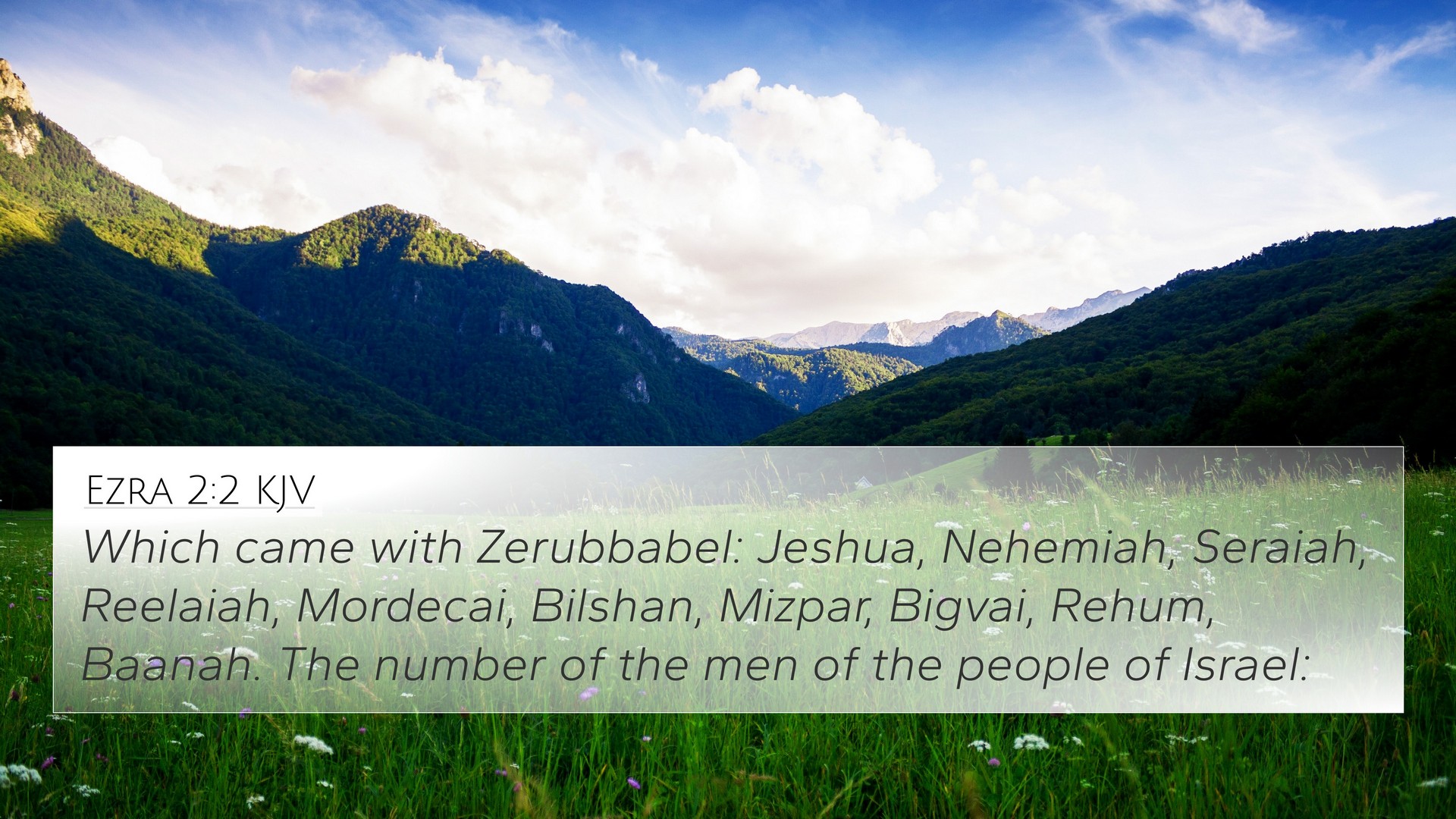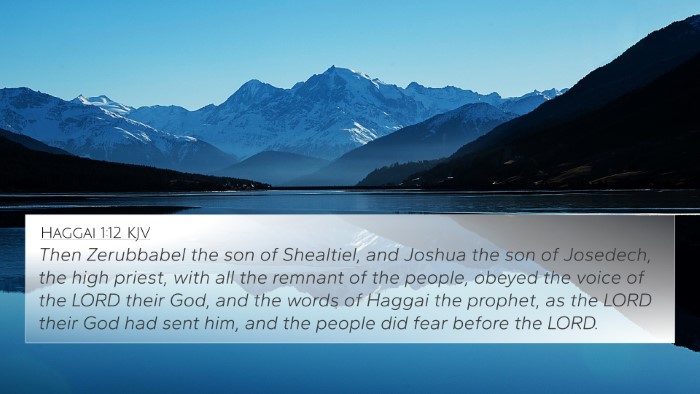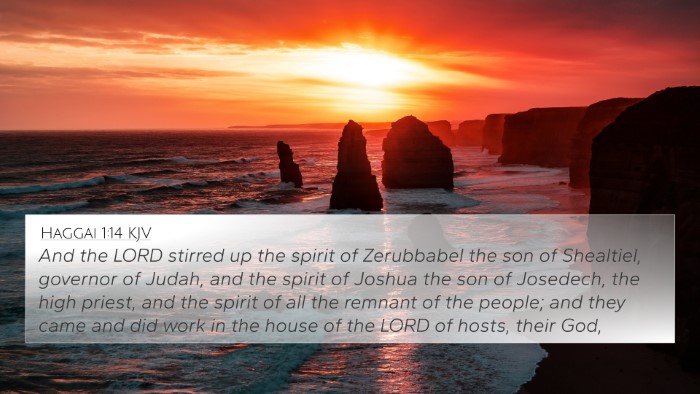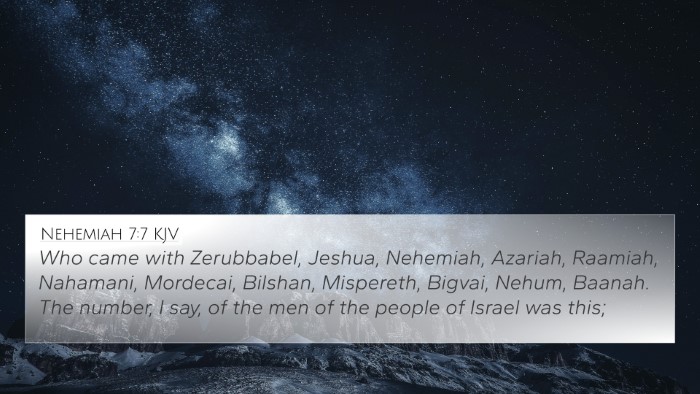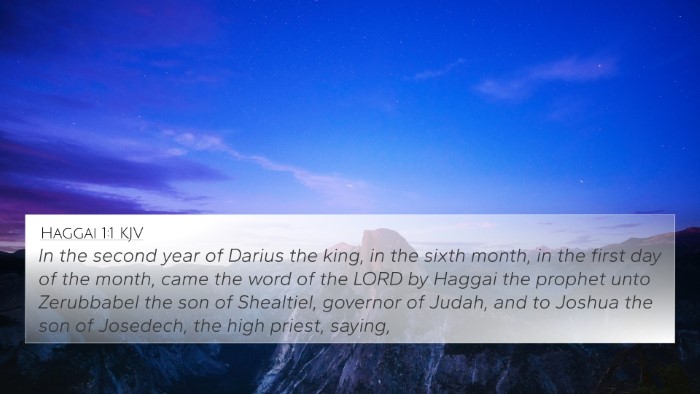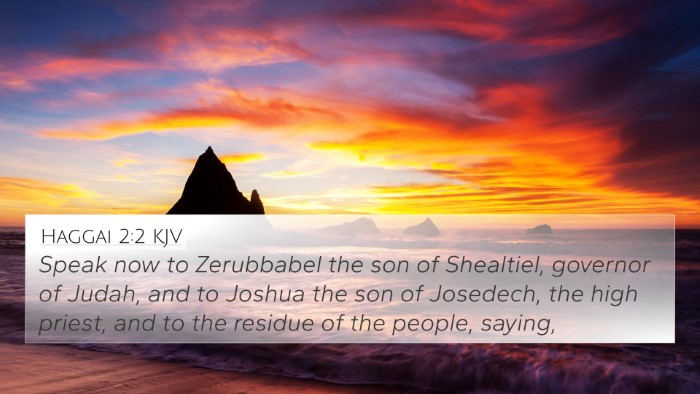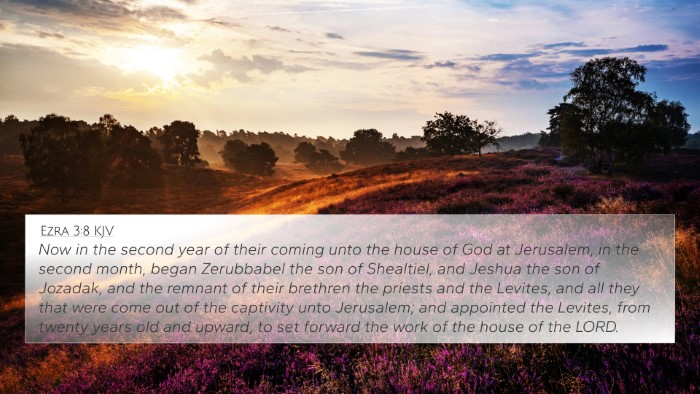Understanding Ezra 2:2
Ezra 2:2 states, “Which came with Zerubbabel: Jeshua, Nehemiah, Seraiah, Reelaiah, Mordecai, Bilshan, Mispereth, Bigvai, Rehum, and Baanah. The number of the men of the people of Israel: ” This verse is significant as it lists the key leaders and individuals who returned from Babylonian exile to rebuild Jerusalem and the temple. Their names carry weight in the history of Israel, each potentially representing families and tribes restored to their rightful place in God’s covenant.
Significance of Names and Leadership
The names mentioned in this verse not only signify historical persons but also represent the fulfillment of God’s promises to His people. Each individual had a unique role in the restoration of Israel:
- Zerubbabel: Grandson of King Jehoiachin, he serves as a governor and symbolizes the royal lineage.
- Jeshua: The high priest who leads the people in religious restoration.
- Nehemiah: Although mentioned here, he is known for rebuilding the walls of Jerusalem in the subsequent narrative.
- Seraiah: A likely priestly figure representing the city’s spiritual leadership.
Biblical Context and Themes
This verse is a precursor to the larger narrative of restoration found in Ezra and Nehemiah. Its themes emphasize:
- Restoration: God’s faithfulness in bringing His people back.
- Leadership: Importance of godly leaders in spiritual renewal.
- Community: The gathering of people signifies a return to communal worship and shared identity.
Cross-referencing Biblical Texts
The names and the act of returning can be cross-referenced with several other Bible verses that enrich understanding:
- Haggai 1:1: A prophetic call to action for the rebuilding efforts.
- Zechariah 4:6-10: God’s promise of support in the rebuilding process.
- Isaiah 11:11-12: Prophecy of the restoration of God's people.
- Jeremiah 29:10-14: Assurance of God’s thoughts toward His people during exile.
- Psalm 126:1: A song of joy at the return from captivity.
- Matthew 1:12: Reference to Zerubbabel in the genealogy of Jesus, linking Old and New Testament.
- Romans 9:4-5: Discusses the promises given to Israel, the lineage, and the significance of their calling.
- Acts 15:16: Acknowledges restoration as part of God's plan through His people.
Tools for Bible Cross-Referencing
To explore the connections between Bible verses effectively, consider utilizing:
- Bible concordances: Help identify related verses and themes.
- Bible cross-reference guides: Provide comprehensive insights into links across scripture.
- Cross-reference Bible study methods: Offer structured approaches to thematic studies.
Interpretative Insights from Commentaries
According to Matthew Henry’s Commentary, this returning remnant was divinely appointed, ensuring that God's promises were fulfilled through a faithful remnant. Albert Barnes emphasizes the significance of these names as not just historical data but as integral parts of the covenant community being reestablished. Adam Clarke describes the list as a testimony of those who endured exile, returning to participate in the restoration of worship and nationhood.
Thematic Connections and Practical Applications
As we analyze this passage, it becomes clear that Ezra 2:2 is rich with implications on leadership, faithfulness, and the communal identity of God's people. The significance of names in scripture illustrates how individual contributions, however small, fit into God’s grand narrative. Furthermore, this connection invites believers today to consider their role in God's ongoing story of restoration and mission.
Conclusion
In summary, Ezra 2:2 serves not just as a record of history, but as a key point in understanding the restoration of Israel, God's faithfulness, and the importance of a community committed to rebuilding worship. Through cross-referencing biblical texts and examining the insights from commentaries, we can appreciate the depth and richness of God’s word as it encourages and instructs us in our faith journeys.
